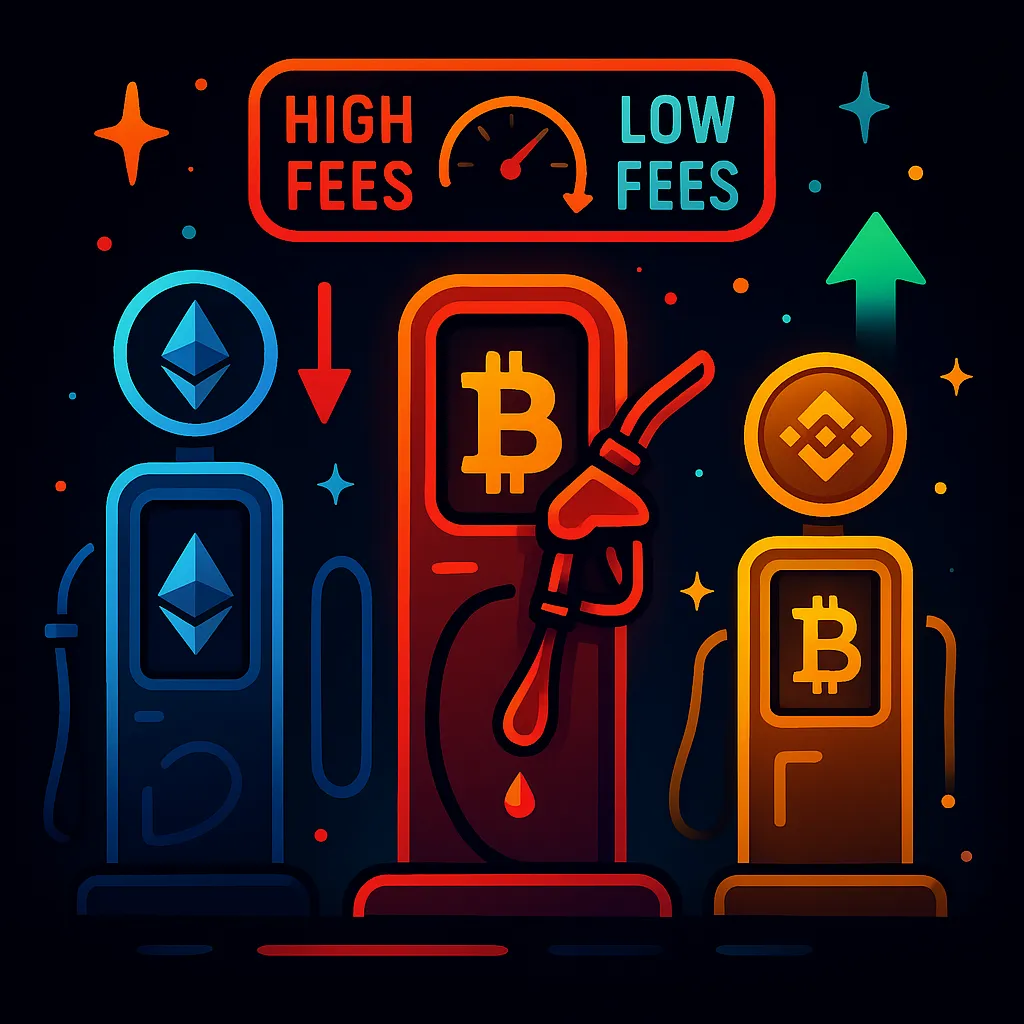If you’ve ever tried to send $20 in USDT on Ethereum and ended up paying $15 just for gas, you know the pain. Gas fees are one of the most hated parts of crypto, but they’re also what keeps blockchains secure. The problem is, if you don’t understand how they work, you’ll keep overpaying while smarter degens are out here stacking sats and farming memes for cheap. Let’s break it down, fam — what gas fees actually are, why they spike, and how to pay less in 2025.
What Are Gas Fees in Crypto?
Every blockchain runs on a network of validators or miners who process transactions. Gas fees are what you pay them for doing the work. Think of it like tipping Uber drivers — pay more, get there faster.
- Ethereum fees are measured in gwei (a fraction of ETH)
- Bitcoin fees are measured in sats per byte
- Solana, Avalanche, BNB → fees are so tiny you barely notice them
The logic is the same everywhere: the higher the demand, the higher the gas.
Why Do Gas Fees Go Crazy?
Gas spikes when too many people try to use the chain at once. A hyped NFT mint, a memecoin launch, or heavy arbitrage trading can push fees through the roof.
Example: during the Otherside NFT mint in 2022, Ethereum users paid over $150M in gas in a single day. Even in 2024, whenever Pepe or BONK-type coins trended, Ethereum gas shot above 200 gwei — turning simple swaps into $50+ nightmares.
Average Gas Fees in 2025
- Ethereum: $3–5 for transfers, $10–25 for swaps (much higher when hype hits)
- Bitcoin: $1–3 most of the time, spikes when Ordinals/Inscriptions flood the chain
- Solana: less than $0.01 per transaction, basically free
- BNB Chain: $0.05–0.20 per transaction
- Layer 2s (Arbitrum, Optimism, Base): $0.10–0.50 per transaction
Bottom line: Ethereum is still king for security and whales, but most retail users moved to L2s and Solana for daily trading.
5 Tricks to Pay Less Gas in 2025
- Use Layer 2s (L2s). Arbitrum, Optimism, Base, zkSync, and Linea are way cheaper than Ethereum mainnet. Example: a Uniswap swap on Base costs ~$0.20 instead of $15.
- Time your transactions. Gas is lower when the US and Europe are asleep. Sending ETH at 3am UTC can be 50% cheaper. Use trackers like Etherscan Gas or Blocknative.
- Batch and bundle. Don’t do ten small transfers. Do one bigger one. Smart wallets like Rabby or Argent even auto-bundle for you.
- Pick the right chain. Stablecoin swap? Do it on Solana or BNB. NFT mint? See if it’s on Polygon or Base. Multi-chain dApps are everywhere now — don’t burn money on the wrong chain.
- Use gas tokens or cashback cards. Projects like Biconomy and zkSync let you pay gas in stablecoins. Crypto debit cards like Binance or Crypto.com cover gas indirectly with cashback rewards.
Real-World Example
In 2024, a trader ape’d into a memecoin on Ethereum with $100. The swap cost $40 gas. The coin went 2x, but after selling and paying another $40 gas, he walked away with $120. Profit: $20. Fees burned: $80.
Same trade on Solana? Less than a cent. That’s why retail memecoin wars shifted to Solana and Base, while whales stayed on ETH.
The Future of Gas Fees
Ethereum is fixing this. With EIP-4844 (proto-danksharding) in 2024, gas on L2s dropped 5–10x. By 2025, Ethereum’s vision is clear: mainnet is for whales, L2s are for the masses.
Meanwhile, Solana, Sui, and Aptos push the “almost free forever” angle. But history shows: cheap is nice, stable is better.
Final Thoughts: Don’t Get Rekt by Fees
Gas fees aren’t going away. They’re the price of playing in the world’s most degen casino: the blockchain. But if you’re smart, you don’t have to bleed ETH every time you make a move.
Use L2s, time your transactions, and pick the right chain. Crypto is supposed to be freedom, not a toll booth. Play it smart, pay less gas, and wagmi. 🚀


